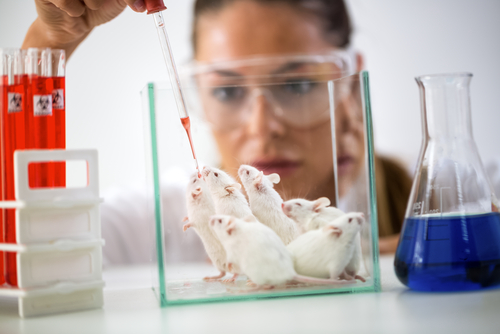Diet High in Fats Can Improve Charcot-Marie-Tooth 1A, Study Suggests

Eating food with high levels of fats was seen to help mitigate damage to the structure of myelin, the protective layer surrounding the nerve cells known to be affected in Charcot-Marie-Tooth disease 1A (CMT1A), in a study using rats.
The study, “Targeting myelin lipid metabolism as a potential therapeutic strategy in a model of CMT1A neuropathy,” was published in the journal Nature Communications.
Myelin is essential for the correct function of the nervous system. It is made by Schwann cells, which are present in the peripheral nervous system, located outside the brain and spinal cord.
In CMT1A disease, peripheral nerve cells have abnormal myelin levels, caused by duplication of a gene that originates 22kDa (PMP22), a protein of the myelin layer. There is a gradual loss of this component (demyelination) and nerve fibers during a patient’s adult life.
Changes in the production of specific fats required for myelin structure have been raised as a possible explanation for this and other demyelinating neurological disorders.
The most common types of fats present in myelin and affected in those diseases are phospholipids, cholesterol and glycosphingolipids.
To confirm that alterations in Schwann cells impair the production of myelin, leading to the disease, a team from several research centers in Germany and a center in Egypt studied alterations in fat metabolism in CMT1A using rats.
The results demonstrated defects in the Schwann cells of the rats, including diminished expression of genes required to produce the fats in myelin, namely phosphatidylcholine and phosphatidylethanolamine.
Researchers found that the lower production of fats led to an altered composition of the myelin. On a larger scale, this deficit changed the structure of the myelin layer, causing the disease.
To better understand the effect of the fat content in the progression of the disease, researchers first administered phospholipids to the rats and later supplemented their diet with food containing high levels of phospholipids. Here, soy phospholipids were mixed into the diet at two concentrations, 0.3 and 3%.
The team saw that injected phospholipids are incorporated in the myelin structure and consequently in the myelin sheath of the nerve fibers, confirming that Schwann cells make use of administrated fats for myelin production.
These results were confirmed when the rats were fed with soy phospholipids. Substitution of phosphatidylcholine and phosphatidylethanolamine in the diet was enough to overcome the myelination deficit of the affected Schwann cells. Also, this treatment rescued a number of myelinated nerve fibers in the peripheral nerves of the rats.
The findings demonstrate that fat supplementation or food with high fat content might be a potential new therapy for CMT1A and other demyelinating disorders.
“We hence suggest that a phospholipid therapy constitutes a promising translatable therapeutic rationale for CMT1A disease, which may also be applicable in conjunction with other newly emerging therapeutic options, such as treatment with antisense oligonucleotides suppressing PMP22 mRNA [the gene product], which has recently been shown to improve the disease phenotype in CMT1A animal models,” researchers said.





